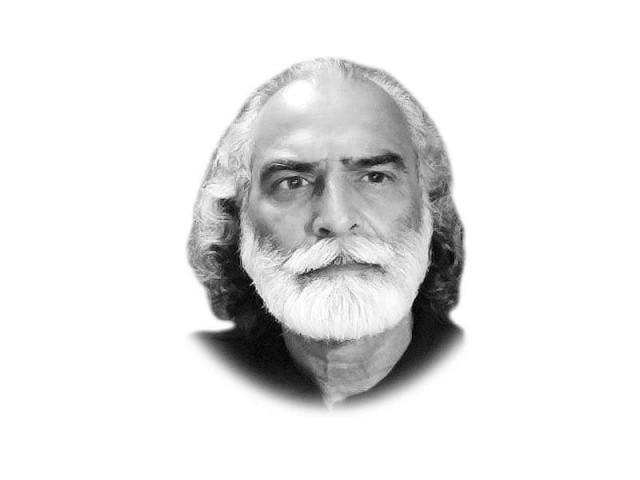Electoral reforms — by the elites, for the elite
How long will the few dozen elite dynasties continue fooling the 230 million Pakistanis?

In August 2017, the National Assembly passed the Election Reforms Bill. The new law was a unified version of nine election laws and enhanced the powers of the ECP by reducing its dependence on the government and parliament to make rules and budget and create positions. Section 103 of the new law discussed the use of technology i.e. electronic voting machines (EVM) and I-voting for overseas citizens of Pakistan in Section 94. Subsequently, the ECP incorporated the use of technologies in its Strategic Plan 2019-23. In October 2018, the Supreme Court also ordered the ECP to form a plan for the overseas Pakistanis to cast votes through I-voting in the forthcoming by-elections.
It is worth mentioning that before the bill was passed in August 2017, the parliamentary committee met 70 times within two years to discuss electoral reforms. The general election in 2018 was held under the new law. By the end of 2020, serious differences emerged between the PTI government and the opposition parties on the use of technology, which have intensified since the PTI government has been ousted. The new ruling coalition appears to be serious about reversing the use of technology in future elections, while PTI wants strict adherence to the election law.
One lone factor that can determine the politics of EVM and I-voting is: who will benefit more from its use? Considering that PTI is more popular amongst overseas Pakistanis, it wants to translate that popularity into a vote bank by providing overseas Pakistanis with the facility of I-voting. On the other hand, for the same reason, the ruling coalition wants to deprive PTI of this advantage.
It is equally important to understand why the parties of the ruling coalition have taken a U-turn on the use of EVM. Given that they have refused to explain their position, one cannot help but make assumptions. EVMs are likely to eliminate the human interface at 25 steps of polling, counting and result preparation. Hence, it will incapacitate so-called electable and habitual fixers of their skills of rigging and corrupt practices.
According to Pattan’s analysis of the recently held local election results in Khyber-Pakhtunkhwa, in 60% of the examined seats of neighbourhood or village councils, the margin of victory was less than the rejected ballots and the percentage jumps to 73% in the case of seats of chairmen. Similarly, a large chunk of the examined forms (XXI) revealed the following errors: incomplete forms, missing polled votes of losers, counting errors, variation of polled votes within the different categories of seats, and incomplete information of returning officers (ROs), and wrong results titles.
Since the 1990s the percentage of rejected votes has continuously increased. For instance, in the general election of 1993, the percentage of rejected ballots was just 1.33% of the polled votes. By 2013, it jumped to 3.2% or 1.5 million ballots. The rejected ballots slightly dropped to 3.1% (1.6 million) in 2018.
Provincial variations need to be considered to understand the dynamics of rejected ballots. For instance, the highest number of overall rejected ballots count was found in Balochistan (5.66% of the total votes polled) followed by Sindh with 3.87%, K-P 3.35% and Punjab 2.67%.
There appears to be a close relationship between rejected ballots and victory as 170 constituencies i.e. 50 National Assembly (NA) and 120 Provincial Assembly (PA) in the general election 2018 experienced this phenomenon. In the 2013 elections, only 35 constituencies suffered from this malaise.
How does it work? Let’s first understand the basic principle of Pakistan’s electoral system. Ours is the first-past-the-post system. A candidate can win or lose even by one vote. In the general election of 2018, the margin of victory in case of eight dozen candidates was less than 5,000 votes, and it was less than 3,000 votes in case of four dozen candidates. Simply, if you are a rich candidate and have no scruples, you just need to bribe some polling staff to tamper with a few ballots in a few polling stations. Unfortunately, there is no dearth of such politicians. A common method used by the polling staff is to not sign the counterfoils or backside of ballot papers. Another method is to make some extra marks on the ballot papers. A candidate could also ask the presiding officers to stuff ballot boxes with extra ballots.
Analyses of election data of previous general elections reveal numerous errors in result preparations. For instance, on average in more than one-fourth of Form 45 and Form 46 several inconsistencies were found, and these errors could have a significant impact on the results. EVMs will eliminate all the above-mentioned rigging practices because they will end human involvement at every step of the polling and counting processes. Polling authorities commit numerous errors and irregularities due to a lack of diligence and training or intentionally. However, EVMs will help produce error-free counting and results.
This seems to be the main reason that some parties have taken a U-turn on the use of EVM. Many politicians appear to oppose the use of EVM based on one factor — why are some of the most advanced countries not using EVM? My simple answer is their electoral systems do not suffer from the malaise that we have.
But the real question is: why is the ruling coalition/elite hell-bent on reversing the law, which they passed just five years ago?
Now let’s briefly examine why elites have second thoughts about the use of I-voting by the overseas Pakistanis. About 100 countries have given the right to their overseas citizens to participate in polling from afar. Some use postal ballots, others allow fax machines and the internet. Most South Asian countries are in the process of adopting some form of technology for their overseas citizens. According to some overseas Pakistani activists, out of 272 National Assembly constituencies, overseas votes may impact 94. One study commissioned by a media group concluded that overseas voters could swing 40 hotly contested NA seats — in Lahore, Rawalpindi, Gujranwala, Dera Ghazi Khan, Faisalabad and Sialkot.
However, those who intend to disenfranchise overseas Pakistanis from voting must know that Article 25 of our Constitution guarantees equality to citizens and grants all adult citizens (whether they live inside or outside of the country) the fundamental right to vote. The state must not disenfranchise the rights of its nine million citizens just because they reside abroad and have been remitting billions of dollars each year to our economy.
Is it not strange that the elites who had held 70 meetings over two years to develop the Election Reforms Bill do not feel any shame in reversing it after realising that its implementation can harm them? How long will the few dozen elite dynasties continue fooling the 230 million Pakistanis? It is only natural for the people to feel outraged.
Published in The Express Tribune, May 13th, 2022.
Like Opinion & Editorial on Facebook, follow @ETOpEd on Twitter to receive all updates on all our daily pieces.
















COMMENTS
Comments are moderated and generally will be posted if they are on-topic and not abusive.
For more information, please see our Comments FAQ